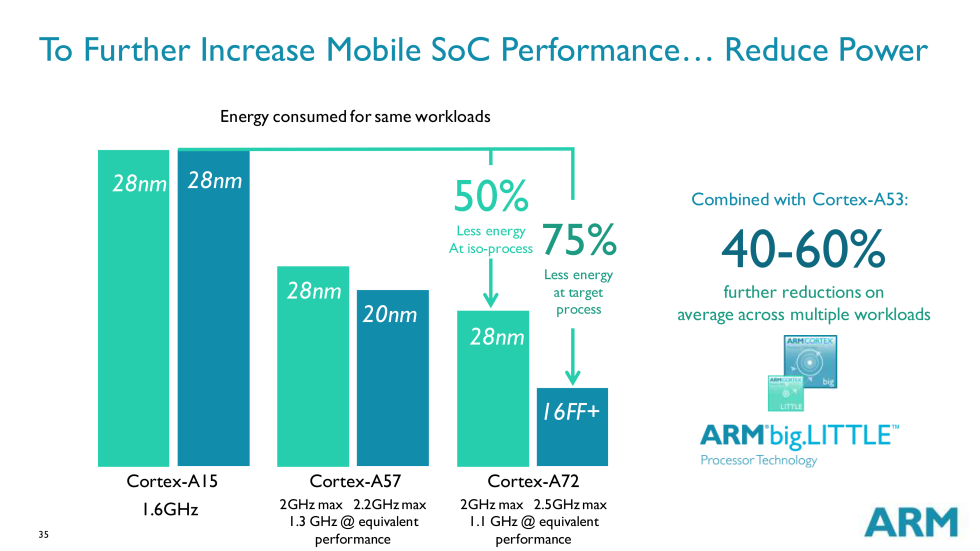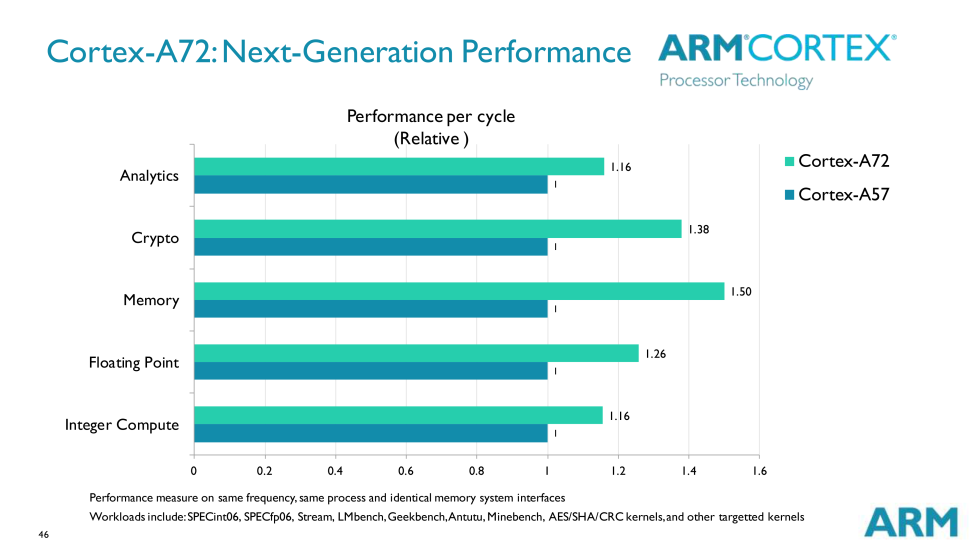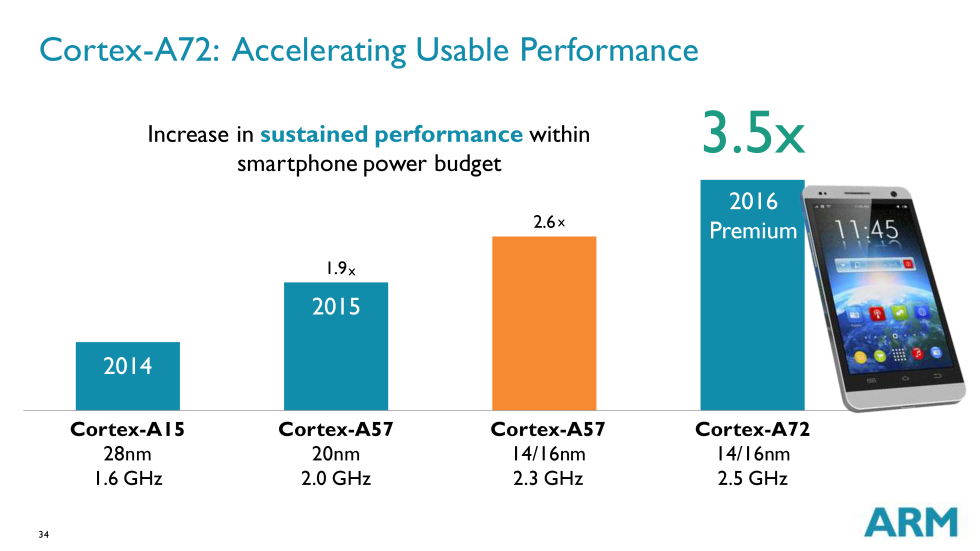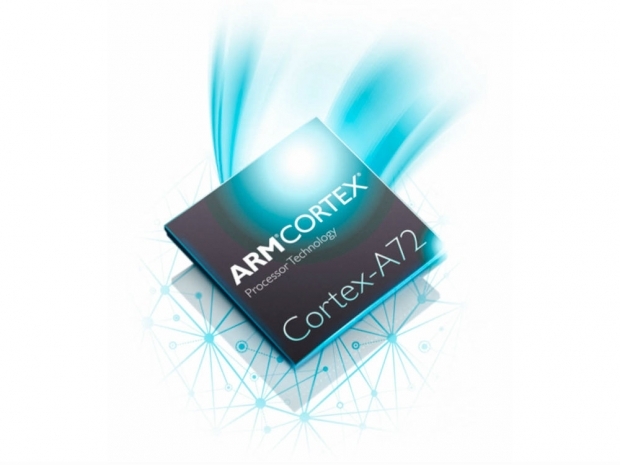In a new set of slides, ARM did not compare the A72 to Intel’s Atom processors, but rather the new Core M 14nm parts. Operating in constrained thermal envelopes, the Cortex-A72 should be able to keep up with Intel’s best tablet part.

Of course, this will only be the case with FinFET Cortex A72 designs, but not all A72s will be churned out using the latest nodes. Some will appear on inexpensive 28nm silicon, which brings us to the next point. ARM claims the Cortex-A72 will be able to match the performance of the old Cortex-A15 at the exact same process, with a 50% reduction in power draw. It will also need about 20% less power than the Cortex-A57 to deliver equivalent performance. The gap widens with new nodes like TSMC’s 16nm FinFET+ process.

Compared to the Cortex-A57, the new CPU core will deliver a performance boost of 16-50%, depending on the scenario. Memory performance will be boosted by up to 50%, while floating point ends up 26% faster.
However, it’s not just about peak performance. ARM made it clear that sustained performance will end up with even bigger improvements. Using the Cortex-A15 as a baseline, the A72 on FinFET should deliver 3.5x higher sustained performance, while the A57 delivers 1.9x on 20nm and about 2.6x on FinFET.

Sustained performance is the biggest problem facing current-gen Cortex-A57 designs, so this is particularly good news. Next year we will have much more efficient CPU cores, matched by new FinFET nodes.
These slides just reminded us of one rather peculiar chip that we saw back in March at the Mobile World Congress. Mediatek’s MT8173 is a quad-core big.LITTLE that has two A72 and two A53 cores. The odd part was that it comes manufactured in 28nm. When we first saw the tablet and the prototype it didn’t make much sense to use to manufacture this advanced A72 core in 28nm. ARM at first advertised A72 as a solution for FinFET manufacturing processes, but as you can imagine the 28nm planar node is significantly cheaper than 20nm planar, or 14/16nm FinFET manufacturing process.
Since you gain a lot compared to 28nm Cortex A15 design, we expect that these 28nm chips do rather well.
You can check out more slides on Ars Technica.




